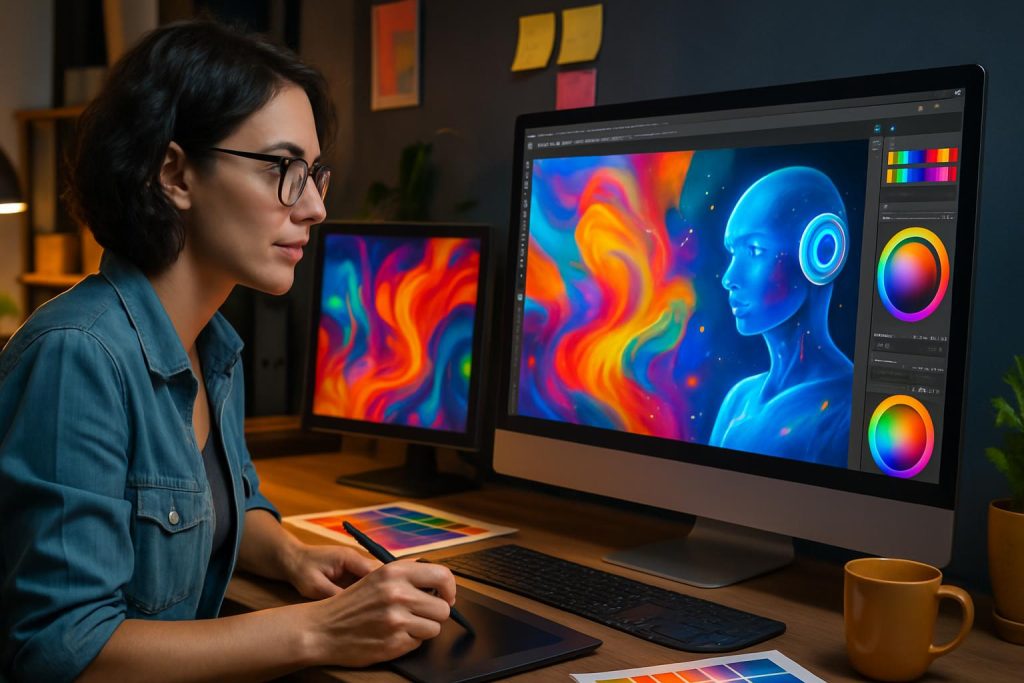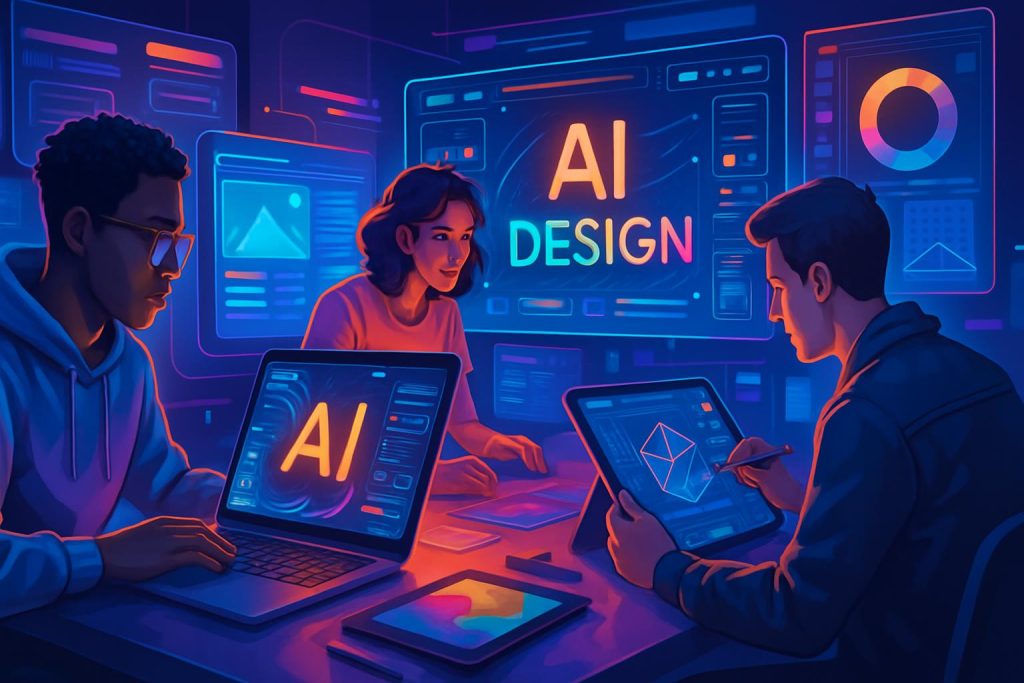Graphic design is a dynamic field, constantly evolving with new technologies and trends. From crafting compelling brand identities to designing engaging marketing collateral, the demand for high-quality visuals is ever-present. However, the creative process, while rewarding, can often be bogged down by repetitive tasks, tight deadlines, and the sheer volume of assets required. Designers frequently find themselves spending valuable time on mundane adjustments, background removals, or generating countless variations, rather than focusing on the core creative vision. This operational burden can stifle innovation and lead to creative fatigue, impacting both the quality of work and the designer’s well-being.
But what if there was a way to offload these tedious tasks, allowing graphic designers to reclaim their time and channel their energy into truly innovative work? This is precisely where AI for graphic design steps in. AI-powered tools are not here to replace human creativity; instead, they act as powerful co-pilots, augmenting a designer’s capabilities and streamlining workflows in unprecedented ways. By automating the repetitive and data-intensive aspects of graphic design, AI frees up designers to concentrate on conceptualization, strategic thinking, and the nuanced artistic decisions that only a human can make. This shift transforms the design process from a labor-intensive endeavor into a more fluid, intuitive, and creatively fulfilling experience.
This article delves into how artificial intelligence is reshaping the landscape of graphic design, offering solutions to common pain points and opening doors to new creative possibilities. We’ll explore the practical applications of AI in various graphic design tasks, from image manipulation and content generation to brand asset creation and design optimization. Building on the foundational concepts discussed in Revolutionizing creative workflows with AI design tools, we will highlight how AI tools specifically enhance visual creativity and efficiency. You’ll learn about:
- The specific challenges graphic designers face that AI can effectively address.
- Key areas where AI tools are making a significant impact in graphic design workflows.
- How AI facilitates faster ideation, iteration, and production of visual assets.
- The benefits of integrating AI into your graphic design process for improved output and reduced workload.
Ready to discover how AI can elevate your graphic design practice, making it more efficient, innovative, and enjoyable? Let’s explore the transformative power of AI in enhancing visual creativity.
The daily grind: graphic design challenges AI can solve
Graphic designers often juggle multiple projects, each with its own set of demands and constraints. The pursuit of pixel-perfect precision and aesthetic excellence can be incredibly time-consuming, especially when dealing with repetitive or technically complex tasks. Consider the hours spent on:
•Image editing and manipulation: Removing backgrounds, color correction, retouching, and resizing images for various platforms are essential but often monotonous tasks.
•Generating design variations: Creating multiple versions of a logo, banner, or social media post to test different aesthetics or messaging can be a lengthy manual process.
•Content creation for marketing: Designing visuals for social media campaigns, email newsletters, or advertisements requires a constant flow of fresh, engaging graphics.
•Brand consistency: Ensuring that all visual assets adhere to brand guidelines across different mediums can be a meticulous and error-prone task.
•Lack of inspiration or creative blocks: Sometimes, the sheer pressure to produce can lead to creative stagnation, making it difficult to generate fresh ideas.
These challenges not only consume valuable time but can also lead to missed opportunities, delayed project deliveries, and, ultimately, designer burnout. The true cost isn’t just the time spent, but the lost potential for more strategic, high-impact creative work. AI offers a compelling solution by automating these pain points, allowing designers to focus on the strategic and conceptual aspects of their craft.
AI solutions for a smarter graphic design workflow
AI tools are fundamentally changing how graphic designers approach their work, offering intelligent assistance across various stages of the design process. Here’s how AI is making a significant impact:
Automated image editing and enhancement
One of the most immediate benefits of AI in graphic design is its ability to automate and accelerate image manipulation. Tasks that once required meticulous manual effort can now be completed in seconds with AI-powered precision. This includes everything from background removal and object selection to advanced retouching and upscaling. AI algorithms can analyze images, identify elements, and apply complex edits with remarkable accuracy, freeing designers from tedious, repetitive work.
For instance, tools like Pixlr, with its AI-powered features, can significantly speed up image editing and manipulation, allowing designers to focus on the creative aspects rather than the technicalities. To truly unleash your creativity with Pixlr AI graphic design, explore its suite of intelligent tools that simplify complex tasks and accelerate your workflow.
Intelligent content generation and ideation
Beyond image manipulation, AI is proving invaluable in the initial stages of the design process, particularly in content generation and ideation. AI models can generate a wide array of design concepts, color palettes, typography suggestions, and even entire visual layouts based on simple text prompts or existing design elements. This capability significantly reduces the time spent on brainstorming and initial sketching, providing designers with a rich starting point for their creative endeavors.
Platforms like Designs.ai utilize AI to generate diverse design assets, including logos, mockups, and even videos, from basic inputs. This allows designers to quickly explore numerous creative directions and present a broader range of options to clients. To Design smarter, faster: explore Designs.ai AI features and see how AI can transform your ideation process and accelerate the creation of diverse design assets.
Streamlined visual asset creation
Canva, a widely popular design platform, has integrated AI features that empower users to generate stunning visuals with unprecedented ease. Its AI capabilities can transform text into engaging graphics, suggest optimal layouts, and even recommend design elements that align with a specific aesthetic. To Generate stunning visuals with Canva AI design, leverage its intuitive AI-powered features that simplify complex design tasks and accelerate your content creation process.
Integrating AI into your graphic design workflow
Embracing AI in graphic design is not about surrendering creative control; it’s about enhancing it. The most effective approach involves integrating AI tools strategically into your existing workflow, allowing them to handle the heavy lifting while you focus on the nuanced artistic decisions. Here’s how to effectively weave AI into your graphic design process:
1.Identify Automation Opportunities: Pinpoint the repetitive, time-consuming tasks in your workflow that could benefit most from AI automation. This might include background removal, image resizing, or generating multiple design variations.
2.Leverage AI for Ideation: Use AI tools to kickstart your creative process. Input keywords, themes, or existing assets to generate a wide range of initial concepts, color palettes, and layout ideas. This can help overcome creative blocks and provide fresh perspectives.
3.Refine with Human Touch: AI-generated content provides an excellent starting point, but the human designer’s touch is crucial for refinement. Use your expertise to fine-tune AI outputs, ensuring they align with your artistic vision and brand guidelines.
4.Batch Processing and Efficiency: Utilize AI’s ability to process large volumes of data quickly. For tasks like image optimization or creating multiple social media posts, AI can significantly reduce production time.
5.Continuous Learning and Adaptation: The field of AI is rapidly evolving. Stay updated on new tools and features, and be open to adapting your workflow as new capabilities emerge. Experiment with different AI solutions to find what best suits your specific needs.
By strategically integrating AI, graphic designers can transform their workflow, moving from a reactive, task-oriented approach to a more proactive, creatively driven one. This allows for greater experimentation, faster delivery, and ultimately, more impactful design.
The future of graphic design is collaborative
The integration of AI into graphic design signifies a powerful shift towards a more collaborative and efficient creative ecosystem. AI tools are not merely automation engines; they are intelligent assistants that empower designers to push creative boundaries, explore new aesthetics, and deliver exceptional results with greater speed and precision. By offloading the mundane and repetitive, AI allows graphic designers to dedicate their energy to the strategic, conceptual, and emotionally resonant aspects of their work. This symbiotic relationship between human creativity and artificial intelligence is paving the way for a future where design is more accessible, more efficient, and more creatively fulfilling than ever before. The true power lies in harnessing AI to amplify human ingenuity, ensuring that the art of graphic design continues to evolve and inspire.



